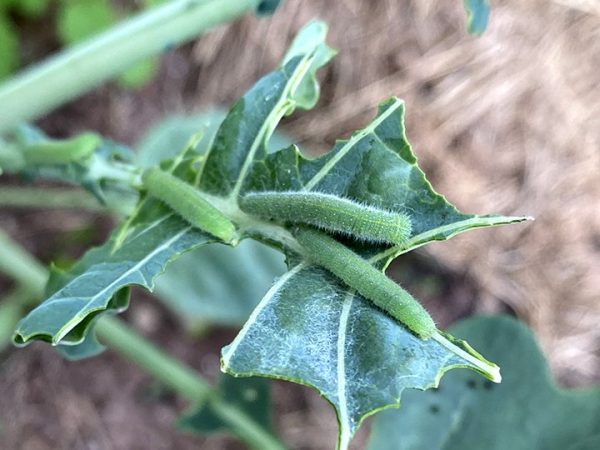Finding ragged, holey leaves on your cauliflower plants can be frustrating But with some detective work, you can discover what pest is munching on your cabbage cousins and take action Here are some of the usual suspects that may be eating cauliflower leaves and what to do about them.
Aphids
Small green, black, gray, or white soft-bodied insects that cluster on the undersides of leaves are likely aphids. They pierce the plant and suck out the sap, causing yellowed, twisted, or curled leaves.
Solution:
Blast plants with water to knock off some aphids Follow up by spraying insecticidal soap or neem oil to kill them Ladybugs also feed on aphids,
Flea Beetles
Tiny black beetles that jump when disturbed are likely flea beetles. They chew tiny holes and pits in leaves, especially in spring. Heavy feeding can kill young plants.
Solution:
Use lightweight row covers early on to exclude the beetles. Spray neem oil or insecticidal soap. Diatomaceous earth deters adults.
Slugs and Snails
Large, ragged holes chewed in leaves, especially along the edges, indicate slugs or snails. Look for shiny slime trails to confirm. They feed at night.
Solution:
Hand pick them off plants. Set out beer traps. Use diatomaceous earth, coffee grounds, or crushed eggshells as abrasive barriers.
Leafhoppers
Tiny green, brown, or yellow wedge-shaped insects that quickly hop or fly away are leafhoppers. They leave yellow stippling on leaves when feeding.
Solution:
Sticky traps can capture many leafhoppers. Insecticidal soap sprayed on the undersides of leaves will reduce populations.
Imported Cabbageworms
Green inchworm caterpillars with faint yellow stripes eating holes in leaves are likely cabbageworms. They also chew on heads. Look for black frass (poop) residue.
Solution:
Apply Bacillus thuringiensis (Bt) on leaves as soon as small worms are spotted. Use row covers to exclude the moths.
Cabbage Loopers
Pale green 2-inch caterpillars with white stripes that make large, ragged holes are loopers. They may have a “looping” motion when moving.
Solution:
Hand pick off plants and drop in soapy water. Use Bt or spinosad pesticides starting early before they multiply.
Cutworms
Plump brown or gray caterpillars up to 2 inches long hiding in soil, chewing through stems at night. Look for fallen clipped seedlings.
Solution:
Wrap stems with cardboard collars, foil, or abrasive material as barrier. Beneficial nematodes kill larvae in soil.
Root Maggots
Maggots bore into roots making plants susceptible to wilting and disease. Check for rice-sized white larvae in soil near affected plants.
Solution:
Cover with row cover fabric after seeding to exclude egg-laying flies. Drench soil with neem oil.
Caterpillars
Various moth and butterfly caterpillars feed on leaves. Look for green, white, black or yellow smooth or fuzzy worms.
Solution:
Hand pick off plants and drop in soapy water. Use Bt or spinosad sprays before infestations grow.
Identification is Key
While having your cauliflower leaves chewed up is frustrating, the first step is identifying the exact culprit. Visually inspect plants and surrounding soil closely. Traps, barriers, and organic pesticide sprays can then be tailored to target the specific pest. With persistence, you can protect your crop and still harvest plenty of cauliflower heads.
WHAT IS EATING MY PLANTS? | Common Garden Pest Control using Leaf Signatures
FAQ
What are the little holes in my cauliflower leaves?
How do I stop bugs from eating my cauliflower leaves?

